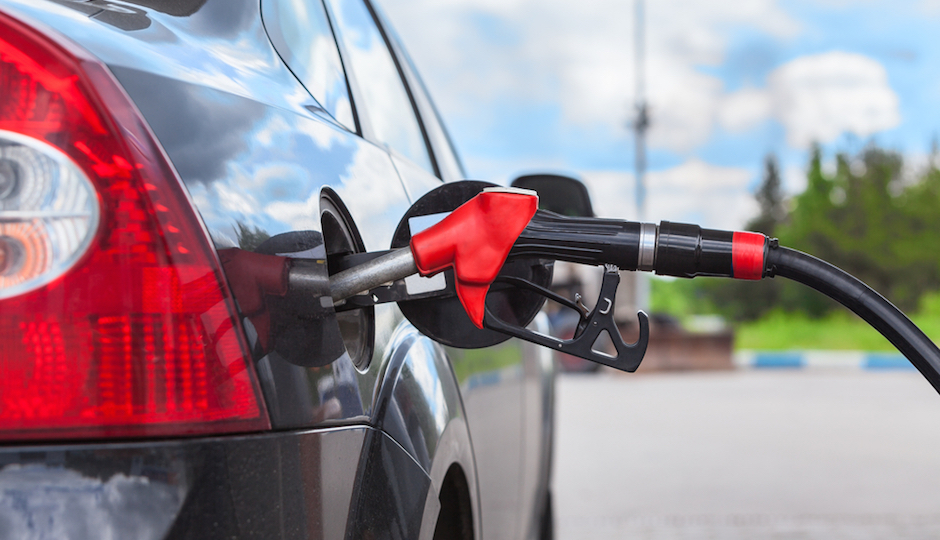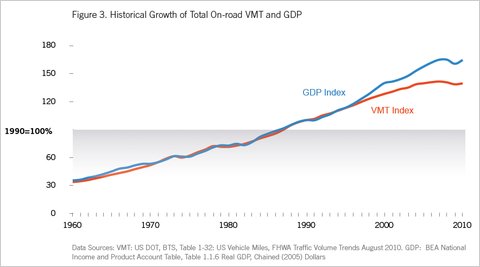The Country’s Lead Foot Rebounded in 2014
For the first time since 2008, Americans logged more than 3 trillion miles of driving last year. That’s according to new data released by the Federal Highway Administration, which shows driving mileage increased 1.7 percent nationwide in 2014 — faster growth than we’ve seen in a decade. Our collective lead foot hastened even as more Americans also rode public transportation last year.
But in Philly, there’s reason to think that our driving habits remain an exception to this broader surge.
Among economic and environmental prognosticators, there’s been a debate for several years about what’s caused the decline in driving during the Great Recession.
Has the slowdown been on account of frugal households responding to a weakened economy? Or does it mark a fundamental, eco-friendly shift in Americans’ transportation behaviors? Vehicle miles traveled (VMT) and our national GDP have traditionally been closely correlated, but recent data shows that their trajectories are growing apart:
Until 2014, driving miles had continued to dip even as the national unemployment rate and GDP gained ground. So if the rebounding economy wasn’t the cause for the one-year hike, a simpler answer could be plummeting gas prices. The average annual price of gasoline was just $3.34 last year, about 15 cents lower than 2013. And the steepest drops in gas prices came between July and December, when driving mileage accelerated intensely. In the first half of the year, driving only rose .8 percent compared to 2013; in the second half of the year, it rose 2.5 percent.
How did cheap gas impact Philly drivers? For now, we can only project. According to research by SEPTA’s manager of strategic planning Erik Johanson, Philadelphians drove 10.8 daily vehicle miles per person in 2006. In 2013, that number had already decreased by almost 15 percent, whereas nationally, per-person mileage had actually increased.
Philly’s driving has been consistently trending downward as more millennials have moved into the city. Between 2006 and 2013, the city’s population of 20- to 34-year-olds increased by more than 100,000.
Unfortunately, Johanson’s study does not include 2014, but PlanPhilly offers reasons to think that the national uptick in driving didn’t trickle down to Philly, or it did only modestly:
Johanson’s analysis shows a relatively sharp jump in [daily vehicle miles traveled] per capita across urbanized areas, suggesting that even as people move to other cities more, their driving patterns are still highly influenced by their economic circumstances. But most American cities don’t have public transportation systems as robust as SEPTA, which has the nation’s sixth largest ridership. Both Houston and LA have significantly larger populations than Philly, but SEPTA has more passengers than those two cities’ transit agencies combined.
Philly’s unemployment rate is down to 7.7 percent, compared to 10.8 just four years ago. Only one-third of Philadelphia households own a car, the fourth fewest among the nations 30 largest metro areas. And SEPTA — despite the blip last year — has continued to gain riders over the past decade.
Many agree that Mayor Michael Nutter‘s ambitious Greenworks initiative has been successful, but critics point to at least one shortcoming: our stubborn car-usage rates. If we did buck the national trend in 2014 and continued to decline our local mileage, it would mean we took another step toward achieving Nutter’s goal of becoming the “Greenest City in America.”


